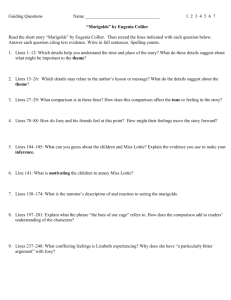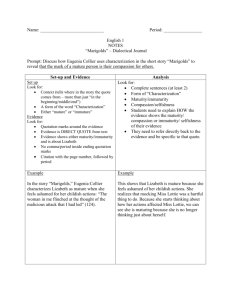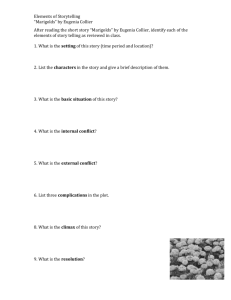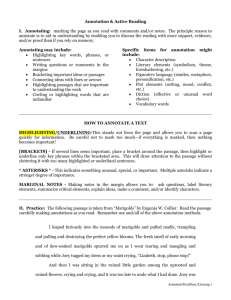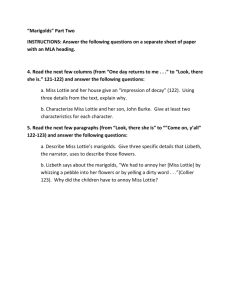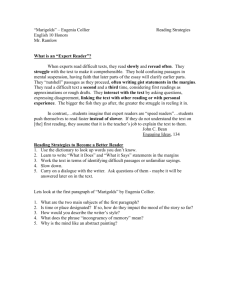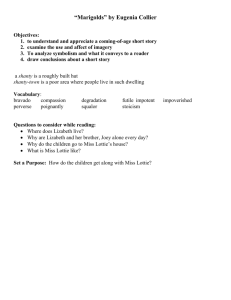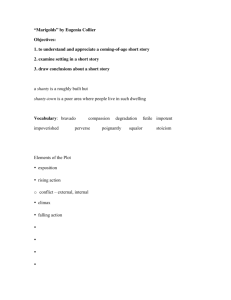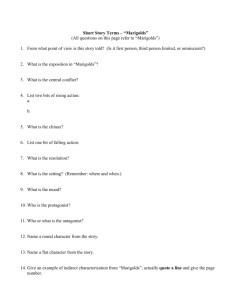Marigolds
advertisement
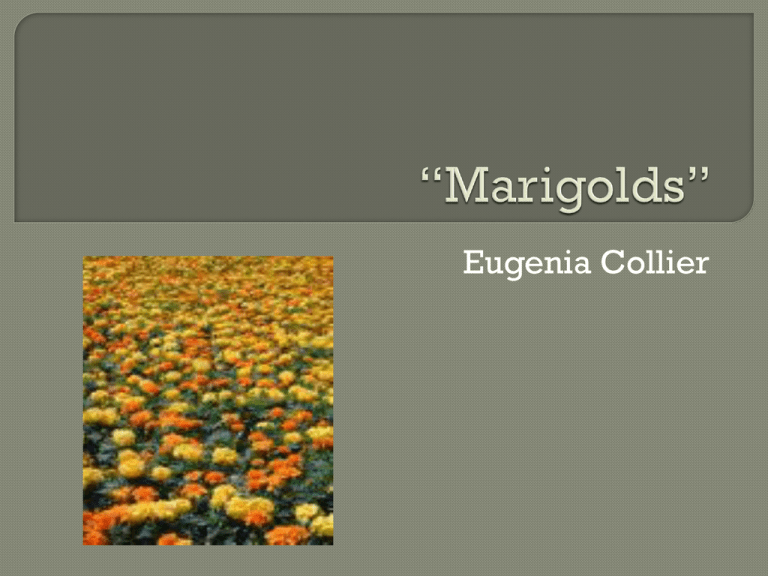
Eugenia Collier Maryland – in an impoverished area during the Depression Lizabeth (1st person narrator – “I”) She’s not a child anymore, but she isn’t exactly an adult, either She antagonizes Miss Lottie and the marigolds Her father is unemployed (her mother provides) She has a little brother (Joey) She’s a good person, but she is frustrated Joey • He’s loud, energetic and immature • He’s a minor character – we do not see things through his point of view • He is scared of Miss Lottie – he thinks she is a witch Miss Lottie • She’s old, and lives in a run-down shack • She lives with her son John Burke Lazy / Sits in a Rocking • Raises her marigolds Chair • She does not antagonize the children • By the end, she is a ‘broken’ woman – she is not even angry (“there was nothing left to protect”) What is a bildungsroman? Coming of age story A “Making of a Man” story bildungsroman is a type of story dealing with a character who ‘comes of age’ . . . The protagonist of a bildungsroman must be a DYNAMIC CHARACTER A character who experiences a significant change The reader is usually aware of the very moment when the transformation from childhood to adulthood occurs That moment is usually presented as an EPIPHANY for the character An Epiphany is a moment of selfawareness or meta-cognition (thinking about thinking) The event or person that causes the epiphany is the CATALYST Catalyst is originally a scientific word meaning “A substance that accelerates the rate of a chemical reaction but is not itself permanently changed by the reaction. This scientific definition is relatively unchanged in the literary sense, except instead of a chemical reaction being altered, a character in a story is altered Miss Lottie acts as a catalyst when she reacts to the destruction of the marigolds . . . What is the definition of a symbol? There are two types of symbols: Contextual: Universal: Is there any object that becomes symbolic throughout Collier’s short story? Absolutely! The marigolds become symbolic because they: 1. maintain their literal meaning 2. they take on a larger, symbolic meaning What intangible ideas do the marigolds begin to symbolize? Actions and events in a story can also become symbolic Can you think of any action or event that becomes symbolic in this story? Yes – The trampling of the flowers becomes a symbolic act of losing one’s innocence and seeing the world through the eyes of an adult In Collier’s “Marigolds” Lizabeth has a life changing experience that forces her to grow up. For homework, write a two paragraph reflection about yourself or someone you know that has changed because of a significant event. Make sure to utilize the terminology of bildungsroman (epiphany, catalyst, etc . . . ) first paragraph should describe the experience. Be specific, using concrete details and proper names. The second paragraph should reflect on the experience and touch on the following questions: What was learned from this experience? Did you know at the time that it would effect your life? What or who was the catalyst? The This is a reflective, creative assignment You can use “I” and you can use the past tense However, you still need to adhere to the standard rules of writing (avoid contractions, pronouns, etc . . . )
